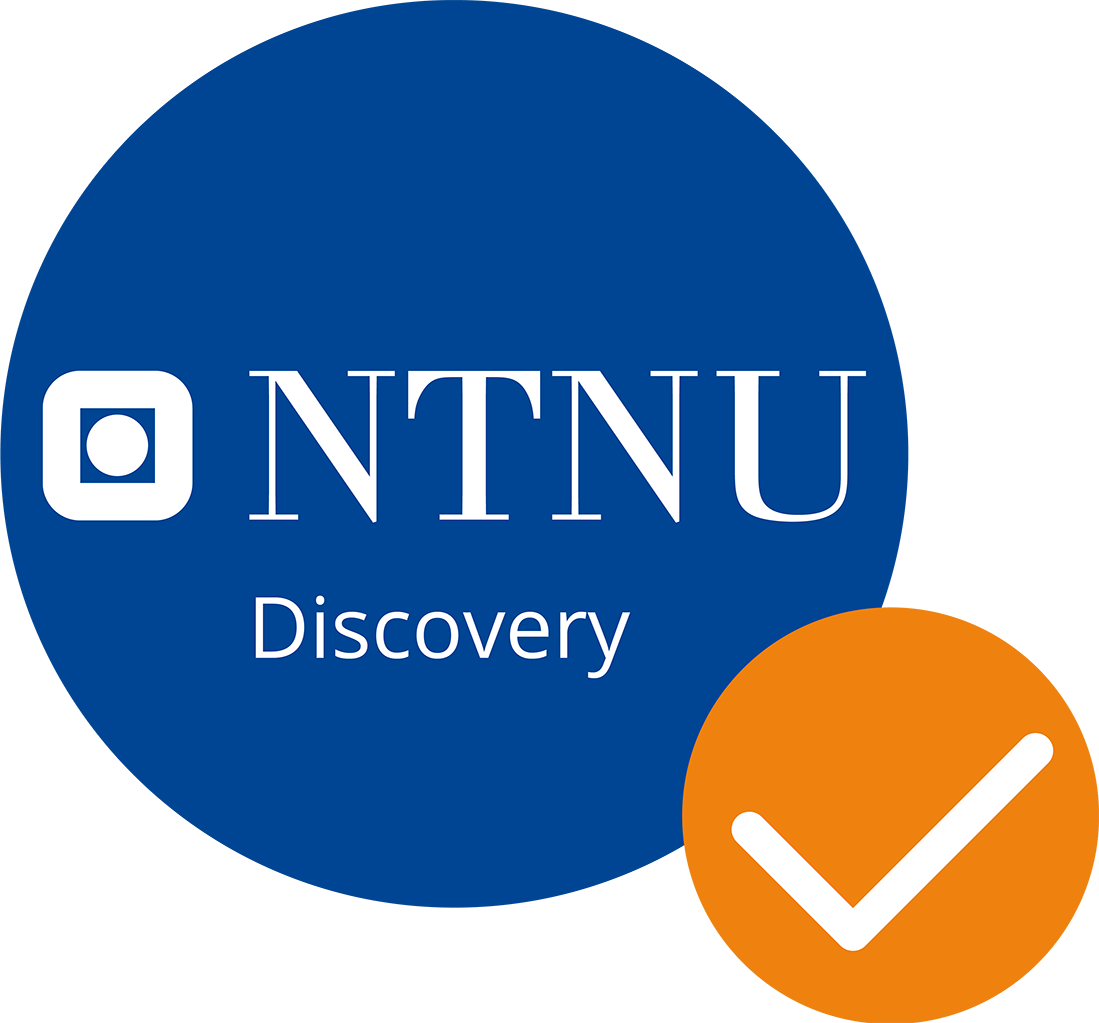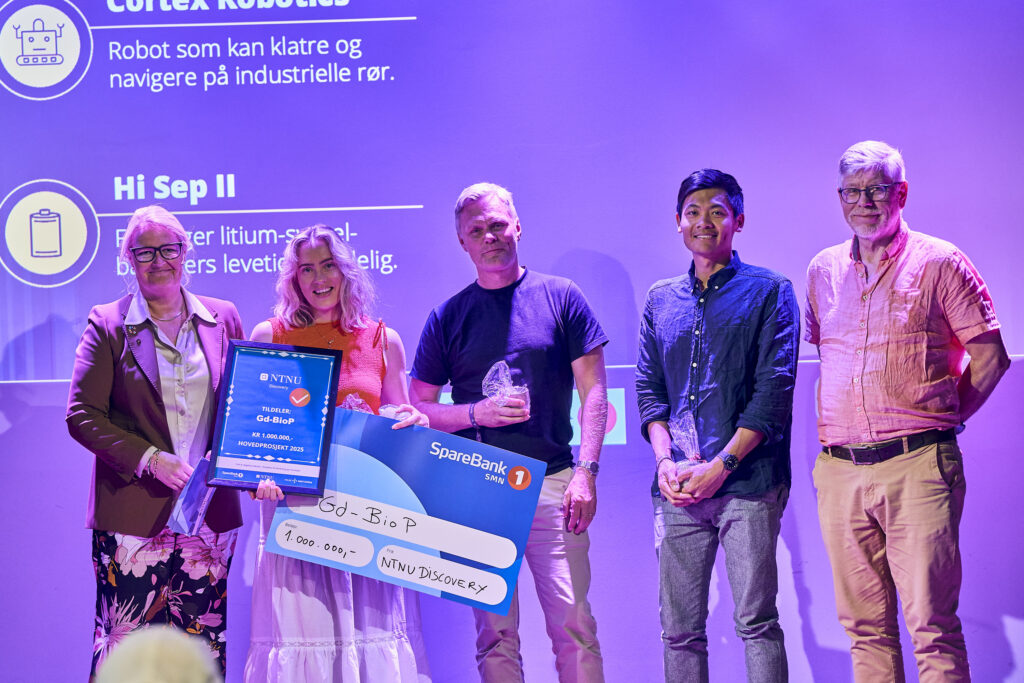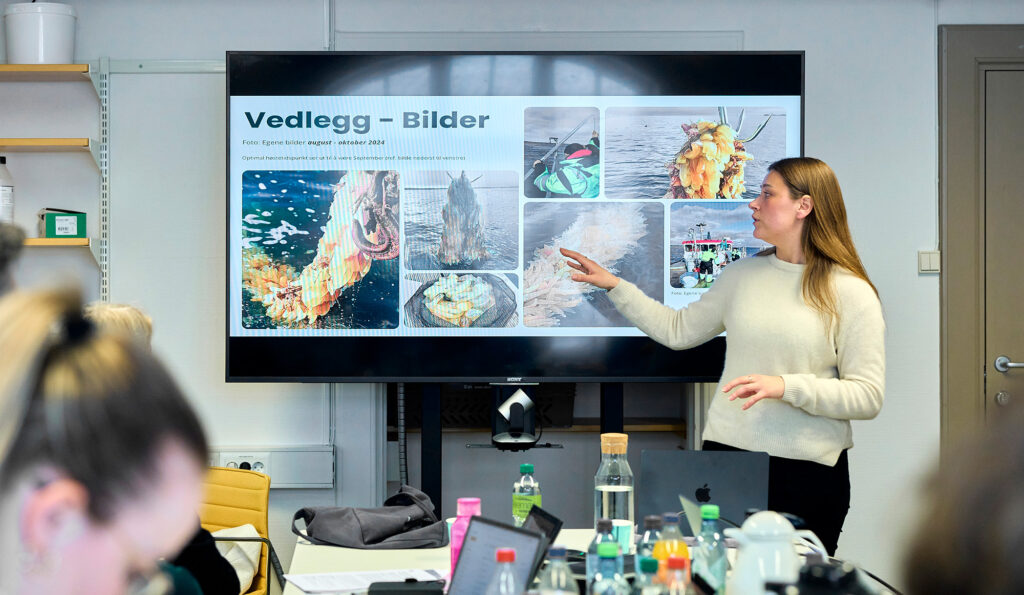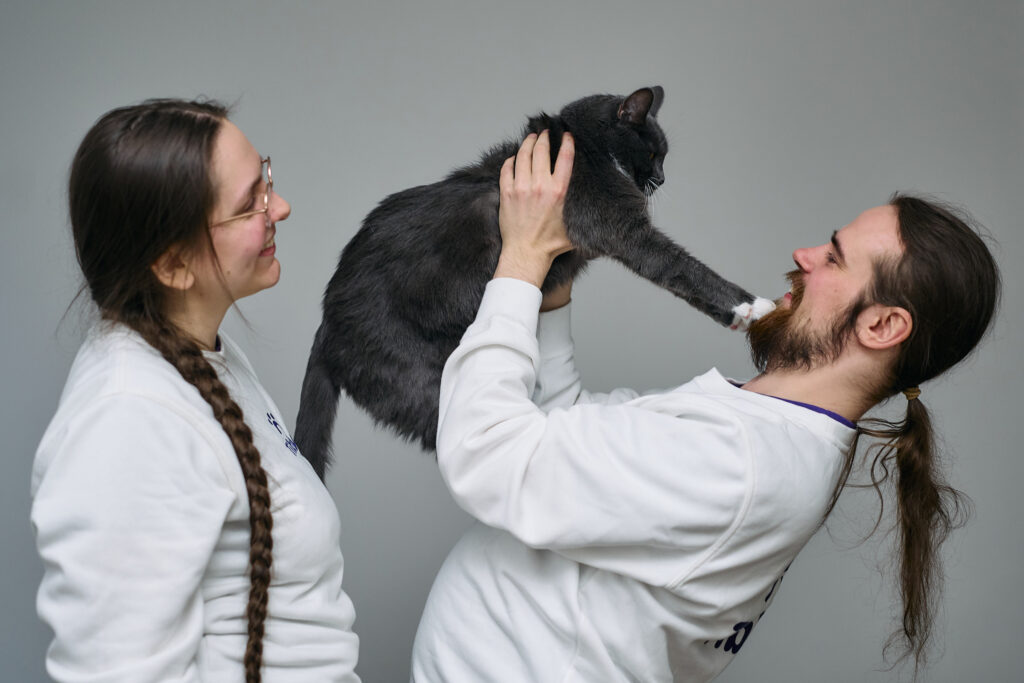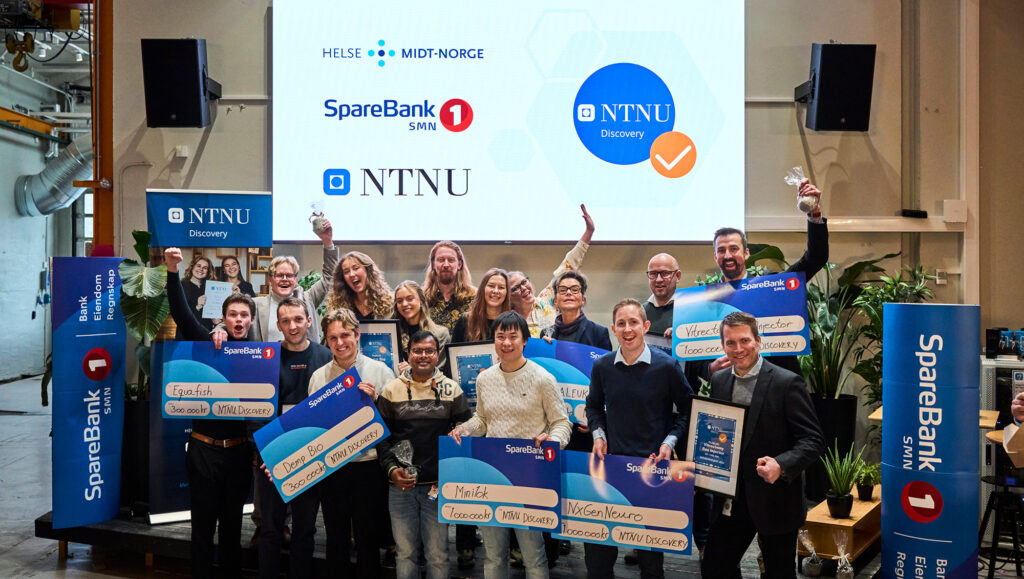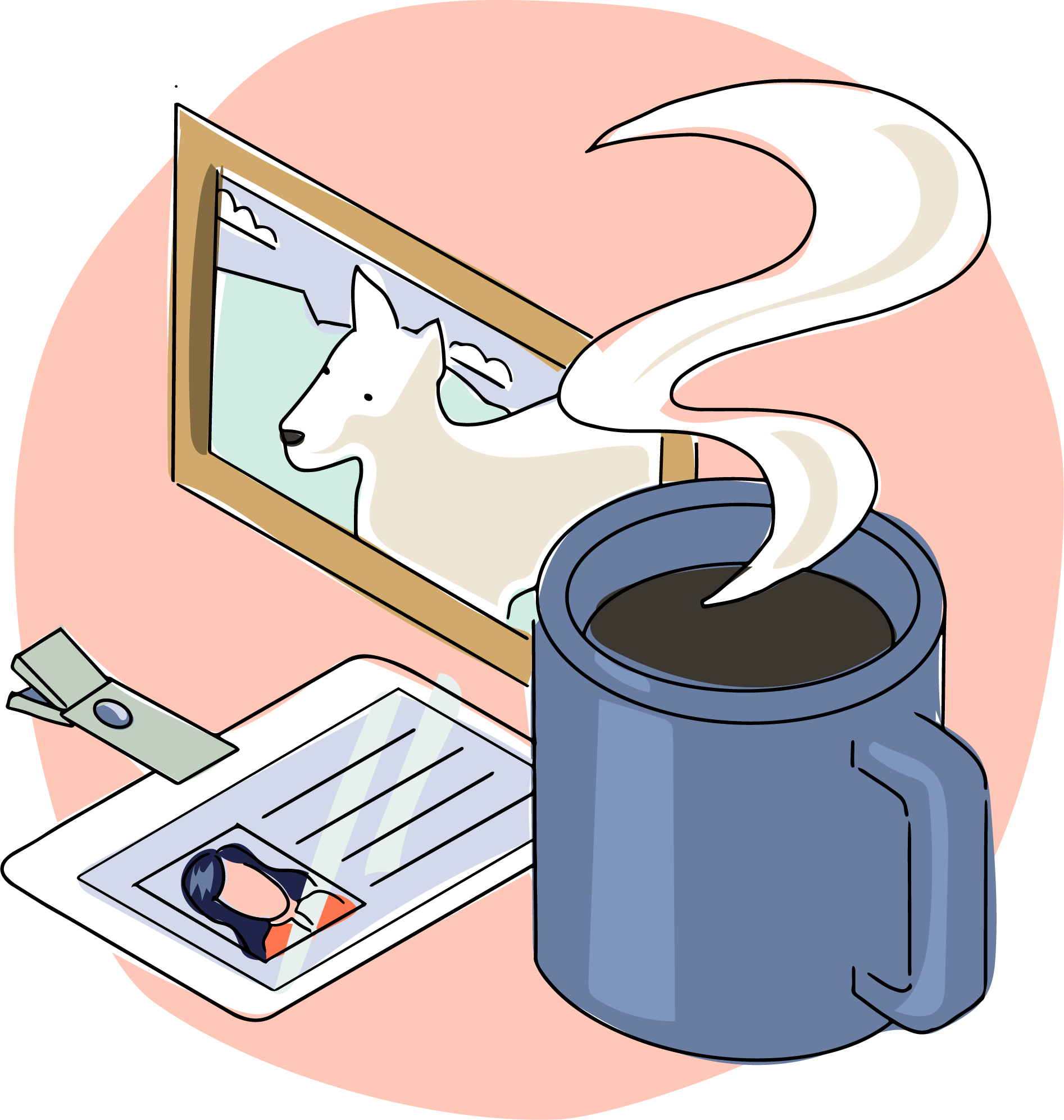Henter store objekter ut fra magesekken
Tekst: Anne-Lise Aakervik
Foto: synlig.no
Erfaringene fra gastrokirurgisk avdeling ved St Olavs Hospital førte til at kirurgene Ystgaard, Storli og Rekstad utviklet et nytt instrument som gjør det enklere å få opp kniv, gaffel og andre større gjenstander som pasienter svelger.

Å fjerne større gjenstander fra magesekken er ikke enkelt. Instrumentene som finnes i dag er ikke egnet, og det kan ta lang tid å få opp fremmedlegemet. I verste fall kan det oppstå skader eller hull i spiserøret og magesekk når gjenstanden trekkes ut. Alternativet er å legge pasienten i narkose og operere ut gjenstanden, noe som blant annet krever ekstra ressurser og tid.
– Fjerning av fremmedlegemer kan være svært teknisk utfordrende og ressurskrevende. Vi har et ønske om å forbedre dagens prosedyre slik at den blir enklere og er mer skånsom for pasientene, sier Lars Cato Rekstad. – Vi støter på et problem og ønsker å gjøre det bedre for oss selv, og ikke minst for pasienten.
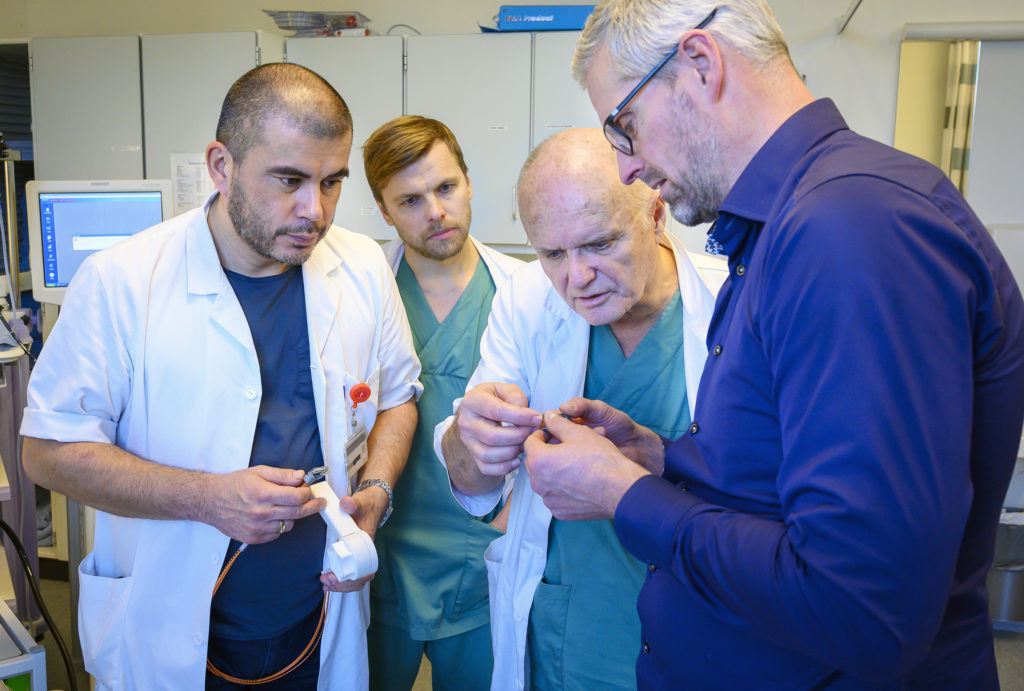 Rolf H Sellebak fra Inventas har laget prototype, og diskuterer ivrig med legene om mulige utbedringer.
Rolf H Sellebak fra Inventas har laget prototype, og diskuterer ivrig med legene om mulige utbedringer.
Syke pasienter
Gastrokirurgene opplever ofte at pasienter kommer inn med fremmedlegeme i magesekken.
– Det er alt fra barn som ved en tilfeldighet svelger batteri, Lego, mynter eller andre mindre gjenstander, de som ved uhell svelger forskjellige gjenstander, og pasienter innen psykiatrien som svelger store ting, som gafler, kniver eller spiker og nåler med vilje som en form for selvskading, sier Brynjulf Ystgaard.
– Og det er denne siste gruppen vi hadde i tankene da vi utviklet det nye instrumentet, sier Per Even Storli.
– Dette er en gruppe som vi ser kan komme tilbake flere ganger på en dag for å få fjernet fremmedlegemer fra magesekken. Disse er svært syke i en periode, og selvskading foregår hyppig. De fortjener bedre hjelp enn det de får i dag, sier Lars Cato Rekstad. – Både kniver og gafler kan kile seg fast i magesekken eller spiserøret og kan skape store skader når vi forsøker å få de opp.
Lite egna utstyr
Dagens instrumenter er utformet som små klyper, pinsetter, tenger og en type slynge som tres over gjenstanden og strammes til, før den trekkes opp via spiserøret. De er laget for å ut små gjenstander eller ta vevsprøver, og ikke for å kunne fjerne store gjenstander. De har dårlig gripeevne og det er vanskelig få godt feste til objektet som skal fjernes. Det kan ta lang tid å lykkes med disse instrumentene, gjerne flere timer og hvis man ikke får det til må pasienten opereres. Ved å utvikle bedre verktøy kan kirurgene spare tid og pasientene slippe timer med ubehag.
Raskt og effektivt
De tre oppfinnerne har utviklet en prototype som allerede har vært testet på gris. Instrumentet brukes ved hjelp av gastroskop, der en slange med kamera føres ned i spiserøret. På tuppen av denne slangen festes det nye instrumentet som er en klype med to runde flater som er designet slik at de gir godt feste på gjenstanden den griper om. Bestikk er gjerne glatt metall, og sammen med væsken i magesekken er det ikke enkelt å få feste.
– Vi måtte ha gripeflater som var sterke nok til å holde en kniv eller gaffel når den trekkes ut. Det må ikke glippe på halvveien, sier Ystgaard.
Et annet viktig poeng er at skivene er bevegelige. Da kan kirurgen enklere komme i posisjon til å hente ut objektet som følger naturlig med når det rekkes ut. Skivene beskytter også slimhinnene mot skarpe kanter i det objektet dras ut. På den måten reduseres risikoen for skader på slimhinnene på vei ut av magesekken.
Testene som er utført viser at de kan ta ut objekter som kniver og gafler fra magesekken på mindre enn 2 minutter. Til sammenligning kan slike inngrep ta 1-2 timer med de instrumentene som er mest vanlig å bruke i dag. Av og til må pasienten likevel på operasjonsbordet for å få fjernet gjenstanden.
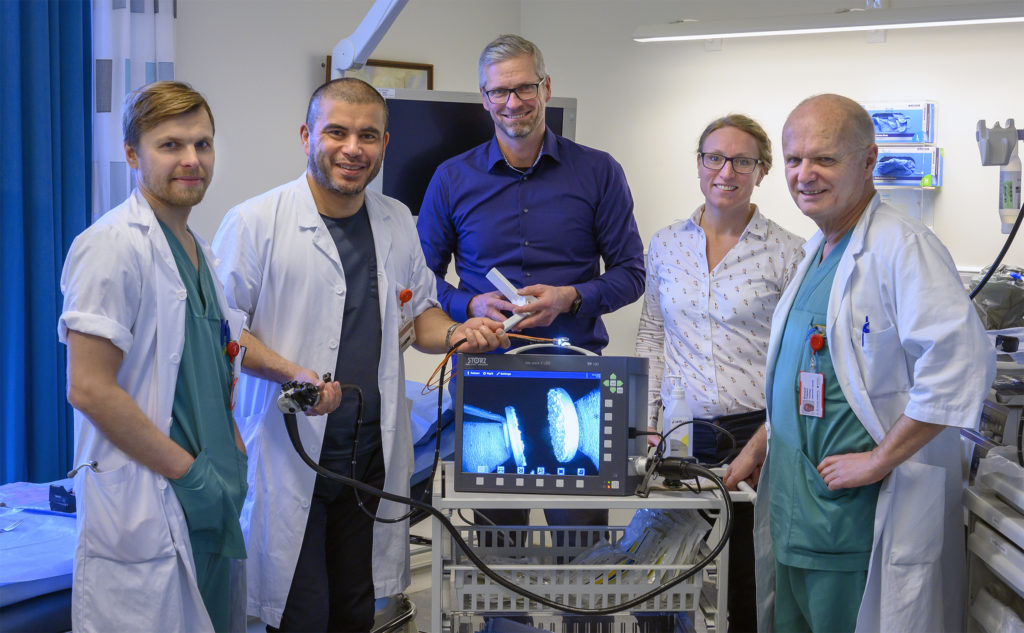
Ryktet går
Prototypen har allerede fått oppmerksomhet internt i legekretser. – Barnekirurgene har allerede tatt kontakt, de vil gjerne ha et bedre verktøy for å hente ut fremmedlegemer fra magesekken. Barn svelger mange rare ting, fordi de ikke vet bedre, sier Rekstad.
De har også fått tommelen opp fra uventet hold. Det viser seg at veterinærene har et stort behov for et slikt instrument. Det som brukes på dyr i dag er kostbart engangsutstyr, og de må ofte bruke flere før de lykkes, da klypene ødelegges.
– Det er utrolig mye en hund kan få i seg. Mobiltelefoner er nokså vanlig har vi hørt, og da trenger de kraftige klyper for å hente den ut, sier Ystgaard.
Neste skritt
– Vi klarer å få til dette på grunn av miljøet vi er i. Det er kort vei til teknologimiljøet ved NTNU, som gjerne samarbeider med legene om utviklingen. Vi har derfor muligheter som få andre har, utdyper Ystgaard.
Med støtte fra NTNU Discovery skal forskerne nå ferdigstille designet og optimalisere betjeningen av klypa og håndtaket. Dette gjøres i samarbeid med designselskapet Inventas. – I tillegg har vi en søknadsprosess inne for å kunne teste ut i større skala, sier Tonje Steigedal som er prosjektleder fra NTNU Technology Transfer Office. – Vi må få bevist at dette har en nytteverdi både for mennesker og innenfor veterinærmedisin – såkalt klinisk verifisering. Dette skal være engangsutstyr til bruk på mennesker, mens det for veterinærer kan brukes flere ganger. Dette må også testes ut.
Fakta:
Inntak av fremmedlegemer forekommer hyppig på verdensbasis, ca. 14 millioner tilfeller hvert år. I omtrent 3 millioner av disse tilfellene må pasienten gjennomgå intervensjon for å få fjernet objektet, fortrinnsvis ved hjelp av gastroskopi ved å ta det ut samme vei som det kom inn ved. Store objekter er spesielt utfordrende å fjerne. Ved St. Olavs Hospital gjøres det 30 fjerninger av ulike metalliske og solide fremmedlegemer (mat og matrester er ikke inkludert) i året.
Prosjekter og nyheter
Kontakt:
Prosjektleder
Jan Hassel
Epost: jan.hassel@ntnu.no
Telefon: 906 53 180
Kontor: Hovedbygget, sokkel
Håvard Wibe
Epost: havard.wibe@ntnu.no
Telefon: 41 47 37 68
Kontor: Hovedbygget, sokkel

